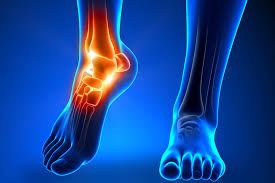Ankle injuries involving torn ligaments and tendons can significantly impact mobility and quality of life. These injuries range from minor sprains that heal with conservative treatment to severe tears requiring surgical intervention. Understanding the nature of these injuries, their symptoms, and ankle surgery as a treatment option helps individuals make informed decisions about their care.
What Is Ankle Surgery?
Ankle surgery encompasses various procedures designed to repair damaged structures within the ankle joint. Surgeons may reconstruct torn ligaments, repair severed tendons, or address related injuries such as fractures or cartilage damage. The specific approach depends on the type and extent of the injury.
Minimally invasive techniques use smaller incisions, specialized instruments, and advanced imaging to repair damaged tissues. The benefits of minimally invasive approaches include reduced tissue trauma, decreased post-operative pain, and faster recovery times. Patients may experience less scarring and can return to normal activities sooner than other methods.
What Are Torn Ligaments?
Ligaments are tough, fibrous bands of tissue that connect bones to other bones, providing stability to joints. In the ankle, several ligaments work together to maintain proper joint alignment and prevent excessive movement. The most commonly injured ligaments are located on the outer side of the ankle, including the anterior talofibular ligament and calcaneofibular ligament. Torn ligaments occur when these structures are stretched beyond their normal capacity or subjected to sudden, forceful movements.
What Are Torn Tendons?
Tendons are strong, rope-like structures that connect muscles to bones, enabling movement when muscles contract. The ankle contains several tendons, including the Achilles tendon, which connects the calf muscles to the heel bone, and the peroneal tendons, which run along the outside of the ankle. Tendon tears can be partial or complete, affecting the tendon’s ability to transmit force from muscle to bone. Partial tears involve damage to some but not all tendon fibers, while complete tears result in total separation of the tendon.
What Are the Causes and Symptoms?
Ankle ligament and tendon injuries commonly result from sports activities, falls, or sudden changes in direction while walking or running. Rolling the ankle inward or outward beyond its normal range of motion frequently causes ligament damage. Tendon injuries may occur from direct trauma, repetitive stress, or sudden forceful contractions of the associated muscles.
Symptoms of torn ligaments typically include pain, swelling, bruising, and instability of the ankle joint. Patients may experience difficulty bearing weight on the affected foot and notice the ankle “giving way” during movement. The pain is often localized to the area of the damaged ligament and may worsen with activity. Torn tendons present with similar symptoms but can also include weakness in specific movements controlled by the affected tendon.
Is Surgery Necessary?
Minor injuries sometimes heal successfully with non-surgical management, which typically includes rest, ice, compression, elevation, and physical therapy. Surgery may be recommended for complete ligament tears. Chronic ankle instability, where the ankle repeatedly gives way during activities, may require surgical stabilization to restore proper function.
For tendon tears, complete ruptures typically requiring surgical repair to restore function. Partial tendon tears may heal with conservative treatment, but surgery may be necessary if symptoms persist or the tear is extensive. Age, activity level, and overall health status influence the surgical decision-making process.
Consult a Podiatrist Today
Proper evaluation and treatment of torn ankle ligaments and tendons require specialized medical expertise. A podiatrist can assess the extent of your injury through physical examination and appropriate imaging studies, then recommend the most suitable treatment approach. Early intervention may lead to better outcomes and can prevent the development of chronic instability or arthritis.









Leave a Reply